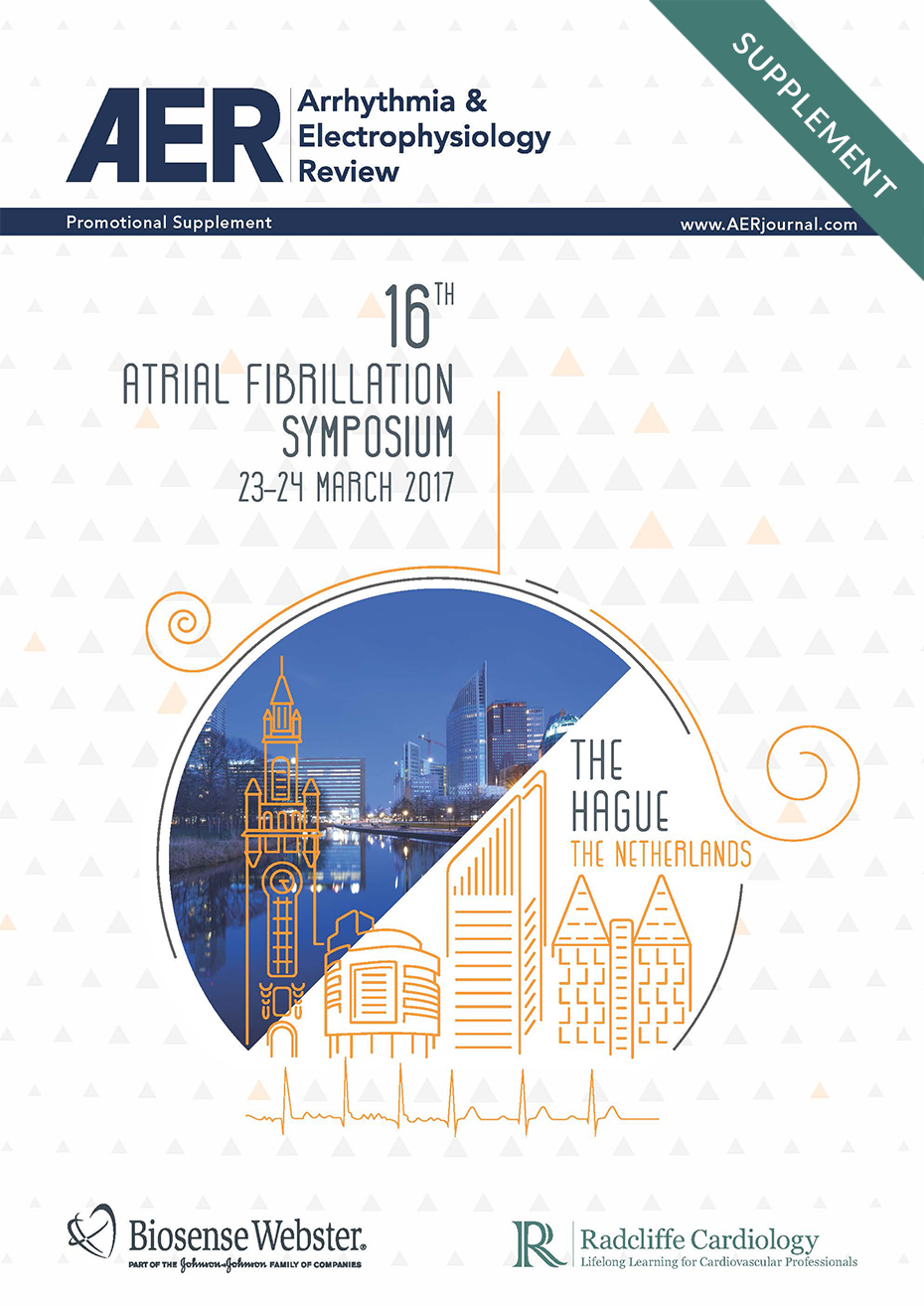16th Atrial Fibrillation Symposium
Atrial fibrillation (AF) currently affects 2 % of the population, with estimates that by 2030, 14–17 million people in Europe will experience AF.1 This debilitating condition is fast becoming a critical public health issue. To improve education and care in this area, Biosense Webster has developed ground-breaking innovations and has sponsored this educational symposium for 16 years. This year’s symposium took place on 22–24 March 2017 in The Hague, the Netherlands, and welcomed an international faculty to present an agenda that reflected the newest developments, research and perspectives in AF treatment.
The Atrial Fibrillation Practical Sessions were conducted on the first day and focused on all aspects of the AF ablation procedure and the practical usage of new technologies in the field of AF ablation. The high-level lectures were case-based and geared towards improving procedure workflow and, ultimately, improving patient care. International expert faculty shared experiences from their practice, as well as tips and tricks. The target audience was physicians looking to perfect their procedure workflows, enhancing efficacy, efficiency and safety through the sharing of knowledge.
The next two days comprised the Atrial Fibrillation Symposium, where international faculties presented the newest developments and research results, some prior to publication. The target audience was skilled AF practitioners seeking the most progressive information in this field to advance their knowledge and practice. Interactive polling via handheld devices provided real-time insights, in addition to engagement through Q&A sessions during each panel discussion. Attendees received up to 10 hours of CME for their participation.
In welcoming attendees to the 16th Atrial Fibrillation Symposium, Prof Dipen Shah of Geneva, Switzerland, said: “This year’s programme has been put together to emphasise currently relevant themes and threads in the field of AF and its treatment by catheter ablation. Although AF has an undeniably characteristic electrical signature, the increasing awareness and understanding of causative sequelae and associated structural abnormalities in the atria have led to the acknowledgement of atrial cardiomyopathy as a distinct entity. The symposium’s scientific intent will therefore kick off with an exposition of this. It is my sincere hope that you will enjoy the proceedings as much as I and my colleagues in the scientific committee did putting the programme together.”
Edition : AER - Volume 6 Issue 4 Winter 2017
Received : 07 December 2017
Accepted : 07 December 2017
Citation : Arrhythmia & Electrophysiology Review 2017;6(4 Suppl 1):1-24
DOI : https://doi.org/10.15420/aer.2017.6.4.S1









